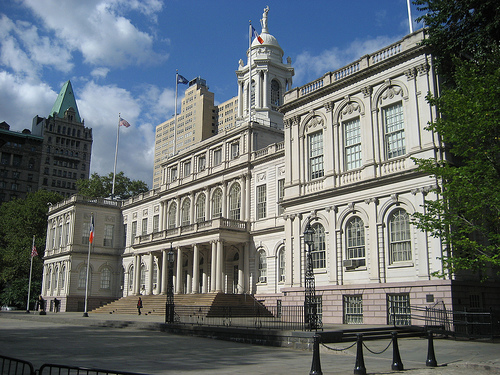
In a country where the president has been forced to work around Congress on climate strategy, the onus may be on local governments to take the challenge of long-term climate planning into their own hands.
And local governments around the U.S. and the globe seem to be attempting just that, according to the results of the Urban Climate Change Governance Survey, conducted by researchers at MIT and ICLEI – Local Governments for Sustainability.
The report analyzes the results of a global survey of members of ICLEI, an international association of hundreds of local and city governments. ICLEI works across 86 countries to spread knowledge of best practices for climate planning.
But while the results show that local governments around the globe welcome the idea of planning for climate change, they also reveal that more effort is desperately needed to foster innovation and to integrate climate planning with economic development goals.
The disconnect between government planners and the private sector surfaces throughout the report. For example, the report states that worldwide, 59% of respondents had completed inventories to quantify their greenhouse gas emissions. But acting on the findings of those inventories has so far meant mostly that cities have reduced emissions from sources they directly control, like city-owned vehicles and government buildings.
These are steps in the right direction, but the report calls on local governments to implement more efforts to reduce the GHG emissions they have quantified. The report states that currently, “the scale of measurement far exceeds the scope of action.”
Local businesses and industry also come in last — behind nongovernmental organizations and community based organizations — when it comes to providing input or support for implementation of local governments’ climate policies, according to the report.
Lack of engagement with the private sector may stem from a misguided belief among city planners that climate mitigation work is incompatible with economic development goals.
Asked their top overall priorities, and then to rank whether mitigation had made a significant contribution to supporting them, 82% of respondents said that their climate mitigation work has contributed little to their economic development goals.
“This shows that the opportunities for synergies between climate mitigation and other local development priorities that have been discussed and documented in the literature on local responses to climate change have yet to be realized in most cities,” the report states.
The report also pointed to a gap between planners’ support for climate planning and innovation and the lack of programs actually implemented to support new ideas.
“Despite showing awareness about the importance of innovation, most cities are not adopting tried and true measures to create the conditions that make innovation possible,” it states.
The survey asked participants what innovative practices were in place in city governments, such as time to pursue personal projects, thematic working groups, or speaker series to bring in new ideas. Neither these practices, nor the others mentioned in the survey, were being implemented by the majority of respondents’ city governments at all – not just on issues of climate change. 87% had no other initiatives in place different from the ones mentioned in the survey.
One of the bright spots of the report was the finding that globally, the majority of local governments are now integrating climate adaptation planning with more longstanding efforts to mitigate the effects of climate change. And, compared with their original climate plans, most respondents said their current ones use a cross-sectoral approach, involving multiple agencies involved in city planning.
Unfortunately, the U.S. respondents lagged behind their global counterparts in integrating adaptation work into their strategies. In the U.S., “only 58% of cities report engaging with both adaptation and mitigation. The United States is also the country with the highest percentage of cities conducting only mitigation planning (41%),” the report states.
One finding that did not vary by region was the importance city governments’ attributed to support from a mayor or other senior officials.
For New Yorkers, that means holding Mayor Bill de Blasio to a high standard on climate policy – one some critics say he is showing no signs of meeting, despite rapid progress in other areas.
On Wednesday, the mayor approved tax relief for New Yorkers impacted by Superstorm Sandy. While the approval will provide a much-needed break for homeowners, the results of the survey show how crucial his role is in preventing future damage.